Last Updated:
October 23, 2025
One of the most damaging and least understood winter problems for shrubs is winter desiccation. Desiccation refers to a condition that causes plants to dry out during the coldest months of the year. Even when the air is crisp and your landscape looks dormant, desiccation can slowly damage your shrubs from the inside out, leaving them brown, brittle, and lifeless by spring.
To avoid this unsightly damage to your shrubbery, keep reading and learn how to prevent damage from desiccation!
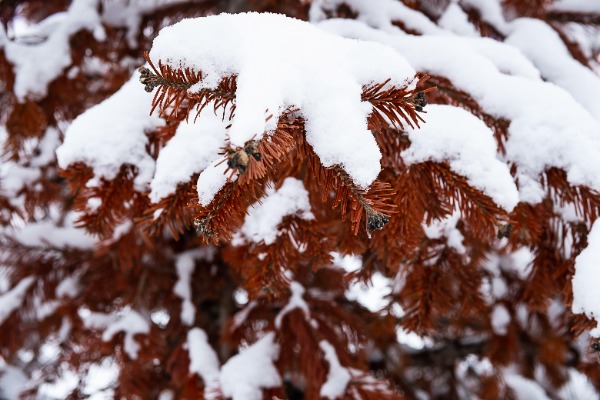
Winter desiccation is essentially a form of dehydration. During winter, when the ground freezes, plants can no longer absorb water through their roots. However, on sunny or windy days, the leaves and needles of shrubs continue to lose moisture through a natural process called transpiration. This imbalance (moisture leaving faster than it can be replaced) leads to cell damage, drying, and eventually the death of leaf tissue.
While many people assume plants simply “go dormant” in winter and stop all biological activity, the truth is that evergreen shrubs and conifers remain partially active. They continue photosynthesizing on warmer days and need some water to sustain themselves. When the soil is frozen solid, that water isn’t available, leaving the plant to slowly dehydrate over the winter months.
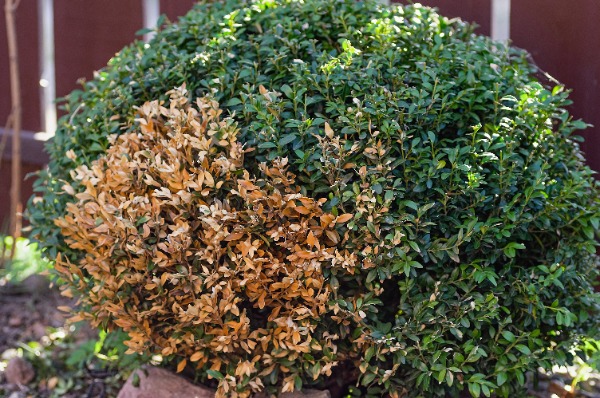
Recognizing winter desiccation isn’t always straightforward, because the damage often appears weeks or months after the problem occurs. Most homeowners first notice it in early spring, when shrubs fail to “green up” as expected.
These symptoms may look like disease or frost burn, but they’re usually signs of desiccation. A simple way to check is to scratch a small section of bark; if the tissue underneath is brown instead of green, it’s likely that part of the plant has died due to dehydration. Here are some common signs to watch for:
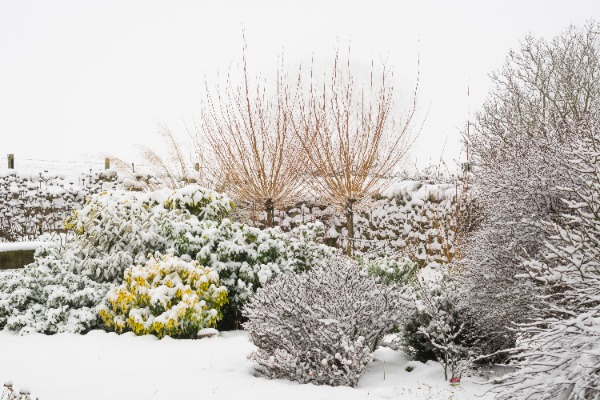
Shrubs, especially evergreens, are more prone to desiccation than other plants because of their exposed foliage. Unlike deciduous trees that shed their leaves in autumn, evergreens such as boxwoods, hollies, rhododendrons, and arborvitae retain their greenery throughout the winter. This means they’re constantly losing moisture to the air whenever sunlight, wind, and dry conditions combine.
Cold winds are one of the biggest culprits. They strip moisture from leaves and needles much faster than still air. When this happens repeatedly, the plant’s tissues dry out, and the shrub can’t rehydrate until the soil thaws. The result is that even though temperatures may stay above freezing during the day, the plant’s internal water balance is already out of sync.
There’s also a misconception that only cold climates face this problem, but winter desiccation can occur almost anywhere temperatures dip below freezing. Even regions with mild winters can experience enough freeze-thaw cycles and dry winds to stress vulnerable shrubs.

While any shrub can suffer from winter desiccation under the right conditions, some species are more vulnerable than others due to their leaf structure and growth habits. Shrubs planted in open or unprotected areas, such as the north or west sides of homes or along fences where winds funnel through, are especially at risk.
Commonly affected shrubs include:
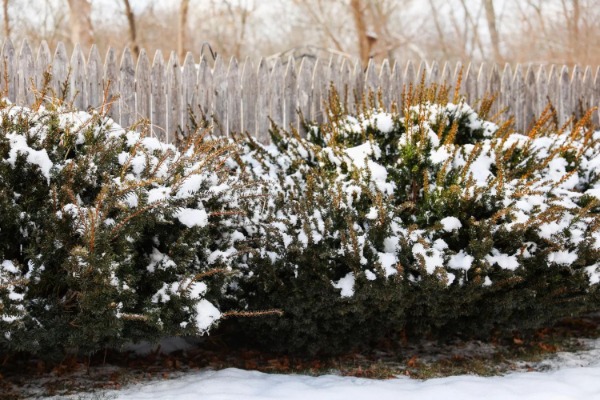
Fortunately, there are several effective ways to protect your shrubs from desiccation before and during the winter season. The key is preparation and prevention. Once the damage occurs, recovery can be slow and incomplete.
One of the simplest yet most overlooked steps is watering your shrubs thoroughly before the ground freezes. Deep watering helps saturate the soil and provides the roots with a reserve of moisture to draw from over winter. Focus on evergreens and recently planted shrubs, which are most vulnerable.
A 2–3 inch layer of mulch helps insulate the soil and maintain moisture levels. Organic materials like shredded bark, pine needles, or composted leaves work best. Keep mulch a few inches away from the shrub’s base to prevent rot while still protecting the root zone from temperature fluctuations.
Anti-desiccant or anti-transpirant sprays are products designed to coat the leaves and reduce water loss through evaporation. These sprays are especially useful for broadleaf evergreens like boxwood and holly. Apply them in late fall, and reapply midwinter if temperatures stay mild or rain washes the product away.
For shrubs exposed to strong winter winds, setting up burlap screens or windbreaks can make a big difference. You can wrap burlap loosely around the plant or erect a frame with stakes to block the prevailing wind. Avoid wrapping shrubs too tightly, as restricted airflow can cause mold or mildew.
Pruning or fertilizing too late in the fall can stimulate new growth that won’t harden off before winter, making it more prone to desiccation and freeze damage. Complete any pruning by early fall and stop fertilizing about six weeks before your average first frost.
During mild winters when the ground thaws periodically, take advantage of the opportunity to water your shrubs. Even one or two midwinter waterings can make a noticeable difference in spring health.
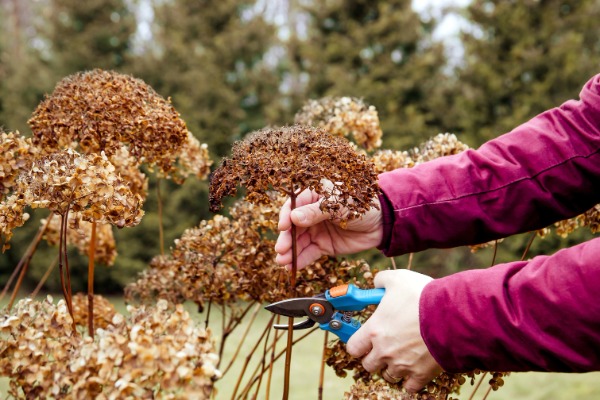
If your shrubs do suffer from desiccation, don’t rush to remove them immediately in early spring. Sometimes, the damage is only superficial, and the plant may recover once new growth begins. Prune away only the dead portions once you see where healthy buds are forming. Continue watering and mulching to help the shrub regain strength.
For severe damage, however, recovery may take multiple growing seasons or may not be possible if the roots themselves have dried out. In those cases, replacement and improved planting practices (such as better wind protection or soil conditioning) are the best solutions.
Winter desiccation is one of the most common and misunderstood forms of shrub damage. While cold temperatures are often blamed, the true culprit is the lack of available moisture during freeze-thaw cycles combined with drying winds. Fortunately, with proper preparation, you can prevent most desiccation damage and keep your shrubs healthy year-round.
If you are looking to protect your landscape this year with the best shrub care in Kansas City, call Heartland today!